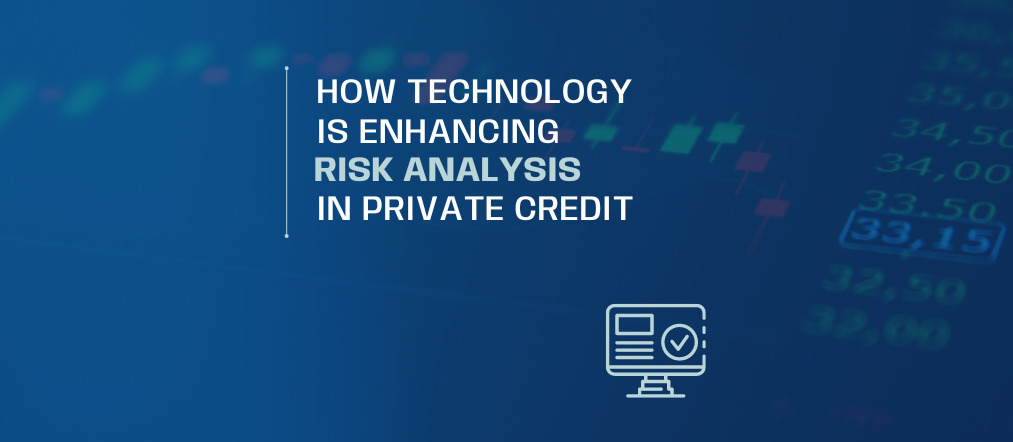During times of economic fragility, large global banks have tightened their risk appetites. With a higher risk of default amongst their portfolio of mid-market borrowers, banks have had to become increasingly selective with their deployment of capital to ensure that their balance sheets are not put under too much pressure. For mid-market enterprises, vulnerable to the lower availability of bank lending and in need of a more flexible credit structure, private credit funds have stepped in to fill the funding gap.
The private debt market has grown more than six-fold since the Global Financial Crisis of 2007-2008, with senior lending strategies experiencing the most robust growth. Today, the private credit market stands at $1.4 trillion and is estimated to grow to between $1.7 and $1.9 trillion by 2025. Yet while private credit has grown to exceed bank lending in most advanced economies, private credit funds are swiftly recognizing that their risk-benefit analysis must evolve at the same pace as the market.
Appeal of Private Credit
While some borrowers have turned to private lenders out of necessity, private credit also offers a compelling business case:
- Flexibility: Borrowers and lenders can work together to tailor a capital solution that meets their needs.
- Speed: Private lenders provide clients with a high speed of deal execution unmatched by more traditional funding options.
- Confidentiality: Private credit transactions help companies to maintain the confidentiality of borrowing levels, costs of capital and the terms and conditions of their facilities; information that would otherwise be readily available to public markets.
Meanwhile, for investors the attraction of private credit is similar to what has made complex fixed income such a strong growth sector:
- Higher Yield: With borrowers willing to pay a premium of higher interest rates, private credit has seen performance 3-6% higher when compared to public high yield and syndicated loans.
- Lower Rates of Default: Private credit has maintained low loss ratios and high recovery on underperforming loans by prioritizing proactive risk analysis and robust risk analysis models. Direct lenders are able to perform higher standards of due diligence with borrowing partners and don’t compete with a syndicate if restructuring, recovery, or liquidation is required.
- Higher Total Return: During a rising rate environment, private credit is largely insulated from interest rate risk. Offered at variable rates, held to maturity, and not publicly traded, private credit will see interest rate movement reflected in its coupon, unlike publicly traded, fixed-rate bonds which typically lose value as interest rates rise.
- Diversification: Private credit strategies can offer diverse exposure for investors. Some strategies are consumer-focused, others corporate, some are focused on economic growth, while others are opportunistically counter-cyclical offering diversification that can protect investors during market changes.
Competitive Pressures Continue To Challenge Standard Risk-Benefit Analysis
Having navigated the first major market credit event in its growth since the 2008 global financial crisis after a global pandemic, supply chain shortage, geopolitical unrest, record inflation and rising rates, a new set of challenges has emerged for private credit teams.
With the proliferation of direct lenders, the increase in volumes of uninvested capital and the dwindling number of suitable borrowers, the industry is grappling with a disparity in supply and demand. To meet the appetite of investors, private credit funds are continuing to expand their risk appetite to review different opportunities or push upmarket to a space normally reserved for bank-syndicated deals. In this competitive environment, direct lenders also require creativity to ensure that their underwriting terms remain competitive without having to take on too much risk.
With lower availability of high-quality deals, increased competition and the requirement to expand into new sections of the market, swift deal due diligence has never been more critical. With private credit teams only investing in a small percentage of the deals they review, having the right technology is critical to delivering efficiency in the due diligence process.
How Can Technology Support Proactive Risk Analysis in Private Credit Deals?
In order to balance selectivity and diversification within portfolios, funds and investors need real-time data and precision tools to build risk analysis models, run scenarios, monitor covenants and performance, and instantly analyze investments at the portfolio, deal, or collateral level.
Using the right software enables collaboration through data management, allowing for confidence and clarity across all parties by:
- Providing a system of record for leveraged facilities
- Normalizing data across disparate data sets
- Managing and automating data flows from trustees, agents, and servicers
Improving Private Credit Reporting and Transparency
As the private credit markets overtake traditional bank lending, this industry niche is drawing the scrutiny of global regulators and ratings agencies. Despite the growing number of private credit funds, they remain concerned that the rapid growth of direct lending may concentrate a large volume of assets with a small number of market participants. Private credit is widely recognized as an opaque, highly leveraged, and lightly regulated market, but the systemic risk of a broad deterioration in credit quality can cause cascading disruptions across the capital markets and the broader economy.
Unlike syndicated debt, private credit is not subject to Leveraged Lending Guidelines, and most deals are not rated or subject to meaningful disclosure requirements. As the market continues to grow, private credit funds will likely need to adopt software solutions in response to increased regulatory focus on stress testing, capital requirements, transparency, and reporting.
Visit T-REX for Private Credit for more information on how we’re making risk-benefit analysis of new private credit deals easier than ever.
